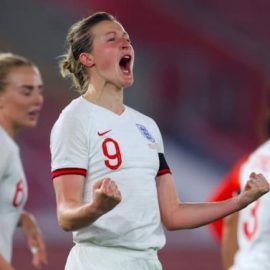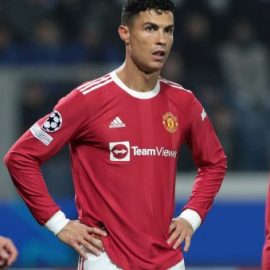Deprivation from football is a terrible thing. A summer without an international tournament represents a painful period of sobriety for most fans. Even the banalities of pre-season are welcomed with open arms by those thirsty for a glimpse of their new signing.
Thus it was with great trepidation that I moved to China recently, thereby denying myself the opportunity to witness the conclusion to own team’s assault on League One. Thankfully, that distress has been at least partially diluted by joining a local village football team. My first game offered an intriguing look at grass-roots football on another continent.
Ill prepared for competitive sport, task number one, aided by a teammate, was to acquire some suitable footwear. But even the choice of shoes here is unusual. Most opt for something closer to a reinforced plimsoll than a discernable ‘boot’. One imagines that the thin canvas would be unlikely to offer a significant buffer to the bludgeoning thud of a British Sunday League tackle.
Disgruntled traditionalists often bemoan contemporary footballers and their wardrobe of snoods, tights and reflective foot furnishings. It doesn’t seem unfair to suggest that these kind of grumblings are often the manifestation of some form of casual homophobia. The terrace heckling such dainty footwear may provoke were it to tread the turf of a UK pitch hardly bears thinking about.
Such critics would be wise to note, however, that in comparison with the conventional leather boot favoured in Europe, this derivative of the plimsoll affords the wearer a significant advantage when it comes to dexterity of the feet. This is significant in South China, for playing on such a barren surface is rather like feeling your first breast – A minimum of four touches are required before you can get your head up and regain some modicum of composure.
Indeed, the experience served as admirable testimony in support of the kind of fret repeatedly voiced by characters such as Trevor Brooking on shows like Football Focus. The argument, briefly précised, is as follows: in Britain, playing on rain-soaked midwinter pitches, the only practical method for avoiding stagnation in the impassable midfield quagmire becomes hoofball. Youngsters are therefore encouraged to play long and this coaching dogma has endured through generations to our detriment. Meanwhile, kids elsewhere develop an aptitude for more technical play as a result of employing a short passing game on a dry surface.
Their claim certainly rings true in China. For the majority of the first half it appeared that goal-kicks employing an aerial trajectory had been outlawed. This was 8-aside so perhaps a box-to-box kick was considered unfair, I supposed. Eventually, however, a punted restart was executed with a familiar thwack and sight of the ball sailing out of touch. It turned out to be the solitary attempt of its kind during the whole game. Instead, when in possession, both goalkeepers opted for a combination of roll-starts and short passes to their respective full-backs. This subsequently pre-empted the structure of almost all attacking gestures, which were typically comprised in no small part by cautious lateral passing.
Facilitating this brand of steady, careful football was the fact that the game is played under the condition of being virtually non-contact, at least by comparison with its British cousin. Frequently, my alien conduct raises chuckles from opposition and teammates alike, as I persevere whilst those around halt in collective acknowledgement of some prior breach of the law. Befuddled, I can often but wonder as to precisely which offence was deemed to have taken place in a seemingly unremarkable passage of play. Although I do note that a boot which dares to so much as contemplate elevating itself above the waistline is swiftly dealt with by a blast of the referee’s oft employed red whistle.
Indeed, the occasional protest gave a rather officious referee a fine grindstone against which to sharpen his already pointy demeanour. His glassy stare pierced the communication barrier erected between us with a searing ferocity that had me instantly recoiling the profanities on the tip of my tongue.
To compliment his stern gaze and shrill mouthpiece, one might have expected the official in question to select a traditional all-black referees attire. For all black is synonymous with force. All black is the colour of the law. All-black means business.
Oddly, however, both our own referee and the official occupying the adjacent pitch were fully kitted in Fifa’s baby-blue with fluorescent trim number.
Whilst pastel blue hardly seems an instantly recognisable stamp of authority, the mere fact that the ref had gone to the bother of purchasing a full Fifa garment did demonstrate that he took his role very seriously indeed.
Simultaneously, it also provided an answer to a question I’d often mused upon. Namely, just why do football’s governing bodies bother to produce such a vast catalogue of outfits for officials and their assistants? Surely the traditional all black garment, with its aforementioned connotations to authority, was suffice. Perhaps one alternative could be useful in case of a clash with one or other playing side. Yet, between the previously discussed baby blue, black, white, green, fluorescent yellow and pink I can already think of six available incarnations and I’m confident that represents merely a fraction of the full array.
Previously I’d wondered who on earth these were produced for. The only conclusion seemed simply to be that Fifa had too much cash and needed to find something to occupy themselves with between making one inadequate decision and the next. Because surely nobody is chump enough to invest in a gimmicky referees get-up when they’ve already shelled out for the ‘new’ design on offer from their own club for the forthcoming season?
The evidence, however, suggests I was wrong. A market does indeed exist in the shape of over-zealous Chinese Amateur League officials. I’ve since noticed an extensive repertoire of purchasable referees jerseys displayed in local sports shops.
Sadly, the fact that the remainder of the clothes rail is predominantly populated by shirts of the ‘Big Four’, plus those of assorted ‘European Giants’, makes for less of a change from home.
And yet, sadly, despite all the oddities and surprises, this isn’t the only aspect of the game which I’ve been disheartened to find transcending borders and afflicting the football of my new home. This writer is still a crap player, and despite some ambitious early comparisons to ‘Wayne Rooney’ from my excitable teammates, I’ve quickly dashed their hopes and firmly established myself in the familiar right-back slot. Some things don’t change.
Add Sportslens to your Google News Feed!






